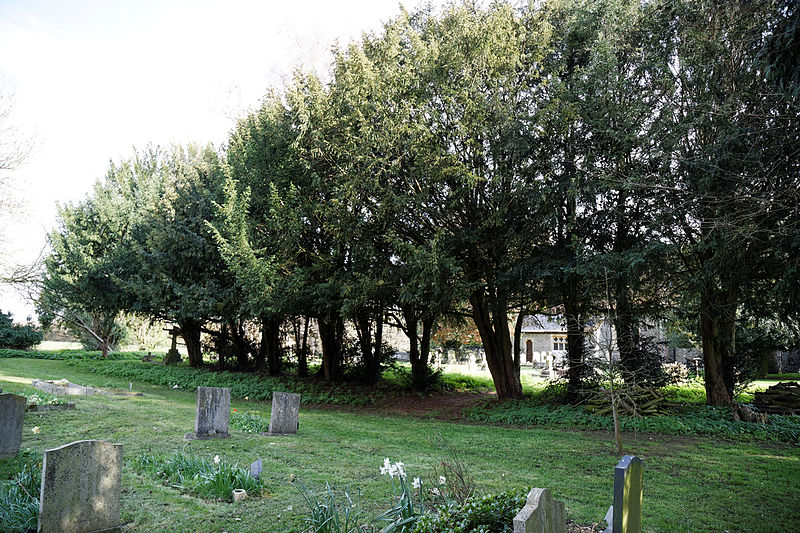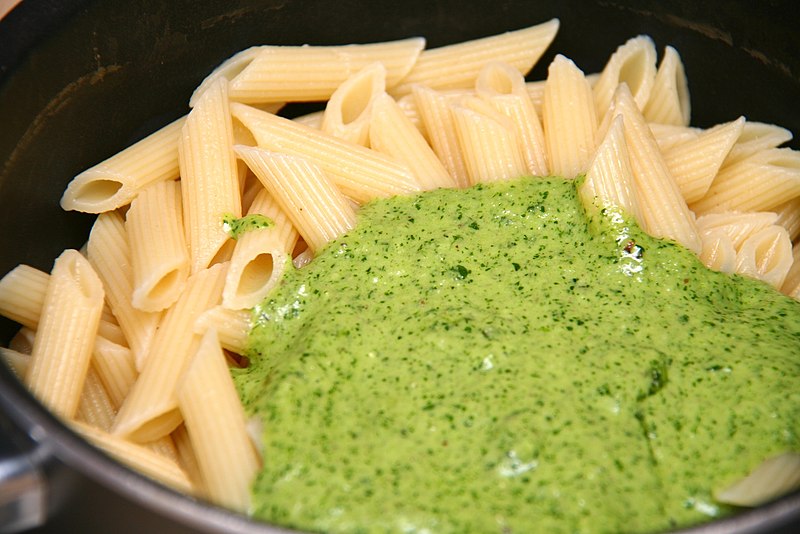By Erin Holden
 As an herbalist I’m interested in many aspects of plants – from their use in herbal and conventional medicine, to lore that informs us how those in the past viewed the plant. I knew that Taxol was a cancer drug made from the yew tree, but when a friend mentioned its poisonous aspects, I decided to dig a bit deeper.
As an herbalist I’m interested in many aspects of plants – from their use in herbal and conventional medicine, to lore that informs us how those in the past viewed the plant. I knew that Taxol was a cancer drug made from the yew tree, but when a friend mentioned its poisonous aspects, I decided to dig a bit deeper.
Taxol, the well-known cancer treatment, was first isolated and studied in the early 1960s into the late 1970s, and approved as a cancer drug in the early 1990s. Paclitaxel, the common chemical name of Taxol, was initially extracted from the bark of the Pacific yew (Taxus brevifolia). It was quickly realized that extracting enough paclitaxel to meet demand would wipe out this species in short order, so scientists turned to its faster-growing cousin, the European yew (Taxus baccata), as an alternative. A precursor of Taxol is extracted from the leaves of the European yew and then synthesized into the desired drug. Use of the leaves instead of the bark, as well as its fast growth, means the European yew is a more sustainable source of this cancer treatment.
 This all sounds well and good, but if we look at the history of yew, we see that it didn’t always have the best reputation – quite the opposite. Whereas Taxol belongs to a chemical group called taxanes, another group, the taxines, is quite deadly. These toxic compounds are found in every part of all Taxus species, in varying amounts, except for the red, fleshy aril. When ingested, taxines act directly on the heart and inhibit its ability to pump properly, causing a drastic drop in blood pressure, arrhythmias, and death. There is no treatment for yew poisoning, and supportive care is not always successful in saving a patient. A brief peek into the medical literature shows that yew has been used in many suicide attempts, both successful and non-fatal. Even as far back as 53 B.C., Julius Caesar recounts how a king of Eburones, Cativolcus, took his own life by drinking the juice of the yew. This deadly aspect of yew, as well as its evergreen nature, likely contributed to yew being associated with death and immortality in both Druidic and Christian cultures.
This all sounds well and good, but if we look at the history of yew, we see that it didn’t always have the best reputation – quite the opposite. Whereas Taxol belongs to a chemical group called taxanes, another group, the taxines, is quite deadly. These toxic compounds are found in every part of all Taxus species, in varying amounts, except for the red, fleshy aril. When ingested, taxines act directly on the heart and inhibit its ability to pump properly, causing a drastic drop in blood pressure, arrhythmias, and death. There is no treatment for yew poisoning, and supportive care is not always successful in saving a patient. A brief peek into the medical literature shows that yew has been used in many suicide attempts, both successful and non-fatal. Even as far back as 53 B.C., Julius Caesar recounts how a king of Eburones, Cativolcus, took his own life by drinking the juice of the yew. This deadly aspect of yew, as well as its evergreen nature, likely contributed to yew being associated with death and immortality in both Druidic and Christian cultures.
 While researching, I stumbled upon an interesting “explanation” for how yews became poisonous, written in the 17th century. Since Druids considered yew sacred, many were planted all over England. Their long association with death likely led to cemeteries of new churches being placed near the trees. It was thought that decaying bodies released noxious gases on the south and west sides of a church yard, which then gathered under and were taken up by the yews. Yew roots were thought to “run and suck nourishment” from the dead, whose flesh is “the rankest poison that could be”, and so the trees themselves became poisonous. Because of this association, the church itself was built on the north or north east side of existing trees (https://www.theparisreview.org/blog/2015/10/31/beneath-the-yew-trees-shade/).
While researching, I stumbled upon an interesting “explanation” for how yews became poisonous, written in the 17th century. Since Druids considered yew sacred, many were planted all over England. Their long association with death likely led to cemeteries of new churches being placed near the trees. It was thought that decaying bodies released noxious gases on the south and west sides of a church yard, which then gathered under and were taken up by the yews. Yew roots were thought to “run and suck nourishment” from the dead, whose flesh is “the rankest poison that could be”, and so the trees themselves became poisonous. Because of this association, the church itself was built on the north or north east side of existing trees (https://www.theparisreview.org/blog/2015/10/31/beneath-the-yew-trees-shade/).
I find it fascinating how facts and lore surrounding a plant can mix and have such an impact on various aspects of human activity – from medicine to community planning. And how a life-saving plant can also have a sinister side. Think about it the next time you pass by your ornamental yew.
Photo Credits: 1) Taxus baccata arils (Frank Vincentz, Wikimedia); 2)Taxus baccata at The Church of St Mary and All Saints in Great Britain (Maigheach-gheal, geograph.org.uk/p/2209844); 3) Line of yew trees in the churchyard of St. Mary and St. Christopher’s Church, Painfield, Essex, England (Image © Acabashi; Creative Commons CC-BY-SA 4.0; Source: Wikimedia Commons)
Resources:
Grobosch, T. et al. (2013). Eight cases of fatal and non-fatal poisoning with Taxus baccata; Forensic Science International, vol. 227, issues 1-3, pgs 118-126. https://www.sciencedirect.com/science/article/pii/S0379073812005324?via%3Dihub
Laqueur, T. W. (2015). Beneath the yew tree’s shade. The Paris Review. https://www.theparisreview.org/blog/2015/10/31/beneath-the-yew-trees-shade/; Accessed 2/22/2021.
Lee, M.R. (1998); The yew tree (Taxus baccata) in mythology and medicine. Proc. R. Coll. Physicians Edinb. vol. 28: 569-575; https://www.rcpe.ac.uk/sites/default/files/vol28_4.1_12.pdf
National Cancer Institute; Success Story: Taxol® (NSC 125973) https://dtp.cancer.gov/timeline/flash/success_stories/S2_Taxol.htm; Accessed Jan 22, 2021.
Rickard, J. (26 March 2009); Cativolcus, king of the Eburones, d. 53 B.C. http://www.historyofwar.org/articles/people_cativolcus.html; Accessed 1/22/2021.
Medicinal Disclaimer: It is the policy of The Herb Society of America, Inc. not to advise or recommend herbs for medicinal or health use. This information is intended for educational purposes only and should not be considered as a recommendation or an endorsement of any particular medical or health treatment. Please consult a health care provider before pursuing any herbal treatments.
Erin is the gardener for the National Herb Garden at the U.S. National Arboretum in Washington, D.C. She is a member of the American Herbalists Guild, United Plant Savers, and a member-at-large of the Herb Society of America.


 The spotlight is shining on parsley this month. Parsley (
The spotlight is shining on parsley this month. Parsley ( The Romans, on the other hand, wore wreaths of parsley to ward off intoxication and used it at meals to mask the smell of garlic. Perhaps this is where the idea of parsley as a garnish originated. It is said that the Romans also covered corpses with parsley to cover the smell of decay.
The Romans, on the other hand, wore wreaths of parsley to ward off intoxication and used it at meals to mask the smell of garlic. Perhaps this is where the idea of parsley as a garnish originated. It is said that the Romans also covered corpses with parsley to cover the smell of decay.  Parsley began to be eaten during the Middle Ages. Charlemagne was said to have grown large quantities of parsley in his gardens for this purpose. Early immigrants brought parsley to the Americas where it was used as a culinary herb.
Parsley began to be eaten during the Middle Ages. Charlemagne was said to have grown large quantities of parsley in his gardens for this purpose. Early immigrants brought parsley to the Americas where it was used as a culinary herb. Parsley is a versatile herb in the kitchen. It adds brightness when sprinkled over any finished dish, and is good in salad dressings, soups and stews. It is one of the ingredients in fines herbes, the French persillade, South American chimichurri, and Mexican salsa verde. The Japanese deep fry parsley in tempura batter, and the Swiss serve deep fried parsley with their fondue. And of course, it is used in pesto. It truly is a universal herb. Herbalist Madalene Hill, former President of The Herb Society of America, in her book
Parsley is a versatile herb in the kitchen. It adds brightness when sprinkled over any finished dish, and is good in salad dressings, soups and stews. It is one of the ingredients in fines herbes, the French persillade, South American chimichurri, and Mexican salsa verde. The Japanese deep fry parsley in tempura batter, and the Swiss serve deep fried parsley with their fondue. And of course, it is used in pesto. It truly is a universal herb. Herbalist Madalene Hill, former President of The Herb Society of America, in her book  Without a doubt, parsley does have medicinal benefits. It is high in vitamins A, C, and K, and contains antioxidants. The leaf, seed, and root are used in medicine. People have used it to treat bladder infections, kidney stones, gastrointestinal disorders, and high blood pressure. Some apply parsley to the skin to lighten dark patches and bruises. It is also used for insect bites. Pregnant women are advised not to take parsley in medicinal amounts, as it increases menstrual flow and has been used to cause abortion.
Without a doubt, parsley does have medicinal benefits. It is high in vitamins A, C, and K, and contains antioxidants. The leaf, seed, and root are used in medicine. People have used it to treat bladder infections, kidney stones, gastrointestinal disorders, and high blood pressure. Some apply parsley to the skin to lighten dark patches and bruises. It is also used for insect bites. Pregnant women are advised not to take parsley in medicinal amounts, as it increases menstrual flow and has been used to cause abortion.